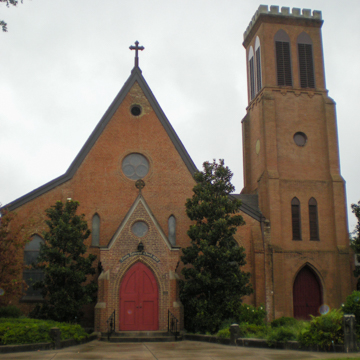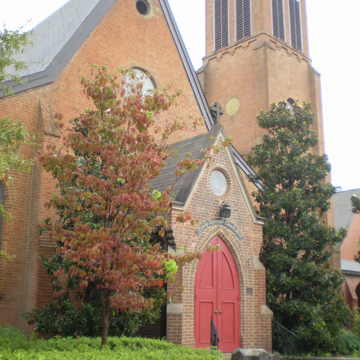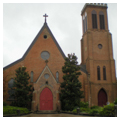The congregation for this Episcopal church was founded in 1859 and met in various churches and homes until 1865, when they bought this lot and ordered thirty-one stained glass windows. The cornerstone was laid the following year; it is the oldest Episcopal church in Arkansas. Constructed of reddish-brown brick, the Gothic Revival church has short transepts, a steeply pitched roof, a gable front, and a gabled portico with stepped buttresses, all of which are features that identify Episcopal churches of the second half of the nineteenth century. A large square corner tower, with buttresses and a crenellated top, anchors one corner of the facade. The circular window in the facade’s gable is echoed by one in the portico’s gable and repeated on the tower. Inside, the painted wooden ceiling has exposed beams supported on slender beveled columns. With little physical obstruction the large stained glass windows allow the interior to be filled with light. An arcaded passage leads from the church to adjacent school buildings, all of which were later additions.
You are here
Trinity Episcopal Church
If SAH Archipedia has been useful to you, please consider supporting it.
SAH Archipedia tells the story of the United States through its buildings, landscapes, and cities. This freely available resource empowers the public with authoritative knowledge that deepens their understanding and appreciation of the built environment. But the Society of Architectural Historians, which created SAH Archipedia with University of Virginia Press, needs your support to maintain the high-caliber research, writing, photography, cartography, editing, design, and programming that make SAH Archipedia a trusted online resource available to all who value the history of place, heritage tourism, and learning.


















